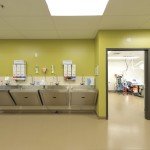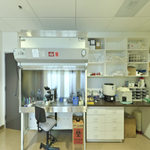About
Success
Treatment
Financial
Resources
Blog
Contact
Site Tools

Resources
- Thank You For Registering To Our ON-DEMAND Seminar!
- Patient Test Form
- Thanks For Authorizing Medical Records Disclosure
- Patient Advocate Program
- Coastal Fertility Blog
- Coastal Fertility News
- Press Room
- Frequently Asked Questions
- Tips for Coping With Infertility
- Glossary of Terms
- Photo Gallery
- Medical Records Request Use
- New Patient Forms
- Online Resources & Links
Frequently Asked Questions
How do I know if I need to see a Fertility specialist?
Infertility has classically been defined as one year of unprotected intercourse without achieving a pregnancy. Couples should consider a quicker evaluation if there is a known sperm problem, or if the mother is past her mid-thirties. If there is any question on your part as to whether you should be seen, please phone us or send us an e-mail. We would be happy to meet with you for a second opinion, and thoroughly review your old medical records.
Why should I make an appointment at Coastal Fertility Medical Center as opposed to another office?
The goal of Coastal Fertility Medical Center is to have you leave with a healthy baby in the fastest time possible, using the least invasive yet most effective therapies available. From the moment you call to make an appointment, you will be greeted by a warm compassionate staff at our California fertility center. Both physicians and nurses are committed to delivering personalized care to help you reach your goal. Ultimately, the true test is becoming pregnant. We are quite proud of our pregnancy success rate. For more information please contact us.
How accessible are the physicians for questions?
At Coastal Fertility Medical Center, we are available to our patients twenty-four hours a day, seven days a week. We take great pride in returning all phone calls personally. We want to answer all of your questions to your satisfaction.
Will you answer my e-mails?
All e-mail inquiries are checked daily. We strive to keep an active open communication with you, either in person, by phone, or by e-mail.
I’m not from California, do you see out of town patients?
A large percentage of our patients are from out of town and overseas. We have a special program for patients that do not live near our Irvine, California fertility center to make this process as convenient as possible. Learn more about our out of town program.
Can you take care of women with fibroids?
At Coastal Fertility Medical Center, we do not just treat patients with infertility. Many women today are choosing to preserve their uterus despite having multiple myoma (fibroids). We frequently perform myomectomies for uterine conservation. Many myomas may be removed through by Hysteroscopy on an outpatient basis. Larger myomas may require inpatient hospitalization.
If my husband has an abnormal semen analysis, should he see you, a Urologist, or both?
We work collaboratively with many Urologists who specialize in male evaluation and treatment. We also send many of our male patients for testing of sperm function to determine which couples should proceed directly to in vitro fertilization with intracytoplasmic sperm injection (ICSI).
I have already had a child and now I cannot get pregnant. Is this common?
Couples suffering from secondary Infertility constitute a large percentage of our practice. Subtle changes in ovulation, causing diminished Fertility, can be easily identified. In many women Endometriosis may be playing a role. Surprisingly, some fathers are found to have a very abnormal semen analysis. In general, treatment for these problems is straightforward and successful.
I have had several miscarriages. Can you help me?
Miscarriage is a common reproductive problem. In couples with two or three consecutive losses, the prognosis for a successful pregnancy in the future is good. At Coastal Fertility Medical Center, we perform a comprehensive evaluation of both partners to determine the causes of your recurrent pregnancy loss. This will include an assessment of your uterine cavity, endocrine profile, chromosome studies, ovulation pattern, cervical cultures as well as immunologic testing.
Do all treatments for Infertility involve “high-tech”, experimental procedures?
No. Many couples are successful in their attempts to conceive using relatively simple and “low-tech” procedures. Less than 5% of all couples seeking treatment will undergo Assisted Reproductive Technologies (ART). Most of the major ART procedures, like In Vitro Fertilization (IVF), are now established medical treatments and are no longer considered investigational or experimental. At Coastal Fertility Medical Center, our physicians have performed thousands of ovulation induction cycles and more than 2,000 In Vitro Fertilization (IVF) cycles.
Who is a candidate for IVF and ART?
Assisted reproductive technologies (ART) include In Vitro Fertilization (IVF) which is the technique of fertilizing a woman’s eggs in the laboratory for the treatment of Infertility. While it was designed originally for women with tubal disease, In Vitro Fertilization (IVF) has been extended with equal success to Infertility due to Endometriosis, poor cervical mucus and unexplained factors. A variant of In Vitro Fertilizaiton (IVF), the GIFT procedure is available to women with normal fallopian tubes. In Vitro Fertilization (IVF) has also been applied to male factor Infertility. While the success rates of standard ART in these cases used to be low, the recent advances in assisted fertilization through ICSI can succeed even in couples with severe sperm abnormalities. ART attempts using the woman’s own eggs drastically drop above the age of 43 years. Fortunately, pregnancy initiation with donor oocytes has proven highly effective in women who are no longer good candidates for traditional ART as well as women with non-functioning ovaries.
What are the risks associated with ART?
The assisted reproductive procedures have so far proven remarkably safe for both the would-be mother and her child, but long-term follow-up studies are not yet available. Occasionally, ovarian cysts may form in response to the Fertility drugs. Some concern has been raised that the use of Fertility medications may increase the future risk of ovarian tumor, including borderline tumors and cancer. However, this finding has not been confirmed and awaits further studies. Laparoscopy and anesthesia carry the same low risks as other surgical procedures, while ultrasound retrieval can occasionally result in a pelvic infection or bleeding. Apart from the increased chance of multiple birth, the risks of pregnancy and delivery are unchanged. With over forty thousand babies born with IVF procedures worldwide, there has been no increased risk of birth defects or abnormalities.
What are the chances of success with In Vitro Fertilization (IVF)?
The statistics of success can be confusing. The current standard, as per the Society for Assisted Reproductive Technology (SART), measures of success are clinical pregnancy and live birth rates per retrieval, the difference between them being primarily due to miscarriages. For recent experience, ongoing pregnancy rate (defined by the presence of a viable fetus with a heartbeat at 12 weeks) approximates closely the ultimate birth rate. The woman’s age is the main determinant of outcome. Our consistently high success rates result from combining extensive clinical experience with state of the art research and innovation.
What should I expect during the IVF process?
In Vitro Fertilization ( IVF) is a complex process consisting of several steps. First, Fertility drugs are given over a period of ten days to stimulate the ripening of multiple eggs. Several blood tests and ultrasound examinations are done for precise monitoring of egg development. At the appropriate time, the eggs are retrieved through the vagina. Egg retrieval is a non-surgical procedure performed under light sedation from which you return home after a couple of hours. Since the egg retrieval is performed in our outpatient surgery center, we can offer you the full range of anesthesia options with a maximum of safety. Once the eggs have been obtained, the sperm is then added to the eggs in the laboratory where the eggs develop for 3 to 5 days. In cases requiring ICSI individual sperm are injected directly into the egg. When embryos are transferred on day 3 after retrieval, the embryos undergo Assisted Hatching. The embryos (fertilized dividing eggs) are placed in the womb by a simple non-surgical procedure similar to a pelvic examination. If a large number of eggs fertilize and develop normally, transfer is often delayed until day 5 to allow better selection of embryos at the Blastocyst stage. When more embryos develop than are transferred, the additional embryos can be frozen and stored for replacement at a later date (cryopreservation). Two weeks after retrieval, a pregnancy test is done. At the end of the first trimester, pregnant patients are referred back to their obstetricians for prenatal care and delivery. If pregnancy does not ensue, treatment can be repeated with an equal chance of conception in subsequent cycles.
What is involved in Embryo Freezing?
If more eggs are normally fertilized and divide to form healthy-looking embryos than is advisable to replace during the treatment cycle, the additional embryos can be frozen and stored for replacement in the future. Once frozen, the embryos can be maintained in storage for several years, but we encourage replacement within 2 years of fertilization whenever possible. The consent form for embryo freezing requests that you indicate how you would like to dispose of the frozen embryo(s) in case of divorce and death. The options include donating the embryos anonymously for the benefit of another infertile patient or discarding them. There is an annual fee for your embryos to remain in storage.
What is a day three embryo?
This is an embryo, which has grown either in the fallopian tube or in the laboratory for a period of three days. From fertilization when the sperm enters the egg until the third day of development the embryo divides in a predictable manner until it becomes a 6 to 10 cell embryo. Most In Vitro Fertilization (IVF) programs transfer these embryos into the uterus at the 8-cell stage. Embryos can be graded in terms of quality based on their appearance. Some factors influencing the grading are the number of cells present, size of the individual cells, and the presence or absence of cellular fragments.
What is a Blastocyst?
This is an embryo, which has been growing for at least five days. It is more developed than a day three embryo, and consists of a larger number of cells (approximately 60) that are to form a tiny fluid filled ball. There are now two cell types present, an inner cell mass destined to become the fetus, and an outer layer of cells that will attach to the uterine lining and form the fetal part of the placenta. This is the stage when the embryo would normally arrive in the uterus during a natural conception.
Can all embryos grow to Blastocyst?
No. Although all embryos have the potential to become Blastocysts only the best embryos will reach this stage of development. Poor quality embryos may stop growing at any point from fertilization through the first 5 or 6 days of development.
Is there any downside to Blastocyst Culture?
Yes. Some embryos may not grow to the Blastocyst stage and as a result there may not be any embryos to transfer on day five. This result may explain why a particular patient is unable to conceive, but such an outcome is very disappointing and unsatisfactory for patients and also for all of the Coastal Fertility Medical Center staff involved in their In Vitro Fertilization (IVF) treatment. This outcome can be avoided by selecting only those embryos which appear to be developing normally and are the best candidates for Blastocyst Culture.
Which patients are good candidates for Blastocyst Transfer?
- Patients who have the highest risk for multiple pregnancy, such as those women who are young (less than 35) and those receiving eggs from a young donor.
- A couple who produces a large number of embryos.
- Any couple who cannot risk the chance of a having triplets or higher order pregnancy, regardless of the reason.
- Those for whom Selective Pregnancy Reduction is not an option.
In all cases, we do not culture embryos to the Blastocyst stage unless there are at least two or three good quality 8-cell embryos when the embryos are evaluated on day three.
Can Blastocysts be frozen?
Yes. Approximately 50% may be expected to survive the thawing process. When Blastocysts are used for frozen embryo transfer (FET) pregnancy rates may be expected to be approximately 20 to 30% per FET.
What is Assisted Hatching?
Assisted hatching is a laboratory procedure designed to facilitate implantation or attachment of the dividing embryos to the wall of the uterus. In order for implantation and pregnancy to occur, the embryo must “hatch” out of the zona pellucida (the egg’s outermost membrane). In some patients, failure to establish a pregnancy after In Vitro Fertilization (IVF) may be related to the inability of the embryos to get out of the zona. On the day of transfer, a small opening is created in the zona pellucida under microscopic control, thus aiding the hatching process.
What is involved in Tubal Ligation Reversal?
While Tubal Ligation is generally considered a permanent procedure, some women desire to have children afterwards. The two options for pregnancy after Tubal Ligation are: microsurgical tubal reversal and In Vitro Fertilization (IVF).
Tubal reversal is performed by carefully reattaching the cut segments of the tubes to restore tubal patency and integrity. Reviewing the operative and pathology reports from the Tubal Ligation procedure is the first step in estimating the feasibility and success rate of tubal reversal. If at least 4-5 cm (2 inches) of the tubes are present after the reversal, women under 37 years achieve a pregnancy rate of up to 70% over a period of one to two years after the procedure. However, certain types of tubal sterilization, such as fimbriectomy (removal of the fimbria), are not amenable to surgical reversal and require In Vitro Fertilization (IVF).
At Coastal Fertility Medical Center, microsurgical tubal reversal is usually an outpatient procedure with overnight 23-hour stay. The surgery is performed in the morning and you go home the next morning. A small incision (“bikini cut”) is made in the lower abdomen close to pubic hairline to expose the tubes for repair. The surgery takes about three hours and a microscope is used to carefully reattach the tubes with very fine sutures. Most women are able to return to work within two weeks after surgery. Surgical complications are uncommon.
Halloween 2019
Each year, Coastal Fertility Medical Center’s staff hosts a fun get together for our former patients and their families. View more photos from our 28th annual Miracle Babies Halloween event!Popular Searches
- Orange County Fertility Clinic
- Irvine, California Fertility Center
- Coastal Fertility Medical Center
- Free Fertility Seminar, Irvine CA
- In Vitro Fertilization and ICSI
- Best Orange County Infertility Doctor
- Southern California Fertility Specialist
- PGD, PGS Orange County
- Egg Donation and Surrogacy
Address
Coastal Fertility Medical Center15500 Sand Canyon Avenue
Suite 100
Irvine, CA 92618
©2024 | Sitemap | HIPAA/Privacy | Disclaimer and Privacy Policy
News from our Top Doctors

Our fertility clinic focuses on helping you build your family regardless of your sexual orientation or the gender you choose to identify with. We are even taking further steps to make LGTB people feel more welcome at our fertility clinic. Each of our patient-facing staff goes through LGTB training to let family-building clinicians provide necessary support and make you feel highly welcome.

Coastal Fertility Medical Center offers one of the most advanced fertility treatments and is completely transparent regarding the costs of procedures and any other expenses that you may have to pay before commencing your treatment. This differentiates us from some fertility clinics that reduce prices before the signing of the contract but charge you extra later on. We make sure our patients are well aware of any possible extra pricing that may occur over the course of their treatment.

The infertility industry is currently segmented, with each service or treatment being handled by a different provider. Our all-inclusive model simplifies an otherwise complex and difficult process. We are here to revolutionize the infertility industry by offering a one-stop-service model to assist our patients through infertility challenges while reducing physical, emotional, and financial risks.

Our globally respected team of specialists are helping improve IVF technologies to enter into a generation of better outcomes for infertility. Although you’ll have a doctor guiding you, you are also going to benefit from the experience and insights of other doctors during case review collaboration meetings, which take place every week. So, you won’t just rely on the expertise of a specialist but benefit from the knowledge of many reputed fertility experts.

Our team specializes in difficult cases and help patients who may have been considered “hopeless” at other fertility clinics. Thanks to our personalized solutions, expertise, and internal collaboration, weare able to maximize pregnancy success rates that are well above the industry average, even in difficult infertility cases.

We know that every situation is different and that everyone requires different treatments. Unlike facilities that take “a one-size-fits-all” approach for all cases, our fertility specialists use more than 40 customized protocols to raise the chances of success. The customized approach even extends to our fertility laboratory. Our on-site lab director and his highly-experienced team nurture every embryo and egg to increase the odds of success of each cycle.

Coastal Fertility Medical Center offers one of the most advanced fertility treatments and is completely transparent regarding the costs of procedures and any other expenses that you may have to pay before commencing your treatment. This differentiates us from some fertility clinics that reduce prices before the signing of the contract but charge you extra later on. We make sure our patients are well aware of any possible extra pricing that may occur over the course of their treatment.
Fertility Preservation
Focus on your priorities and take control of the timeline of your family planning today.
Thanks for Joining!
We will be sending new updates soon.
You’re all set!
Your new patient forms have been submitted and received. We look forward to seeing you at your appointment.
Send us a message, we’ll be happy to answer any questions!
Please complete the form so we can best serve and help you with your journey towards parenthood.
On Demand Seminar Registration
Following the Preimplantation Genetic Screening process, which helps ensure there are normal chromosome numbers and detects possible genetic disorders, the most healthy embryo(s) are selected to be implanted into your or your chosen surrogate’s womb. 2 weeks after the transfer of the embryo, your physician will conduct a final blood test to determine the level of hCG (human chorionic gonadotropin) in your body. Increased hCG levels usually indicate a positive pregnancy test.

For fertilization to take place, the collected egg and sperm are combined in a petri dish and cultured in an embryo incubator. This dish is closely watched to check whether any of the eggs have been fertilized. Once the egg is fertilized, it is referred to as an embryo or a blastocyst on the 5th day of development. Our in-house embryologist carefully nurtures every embryo to the right time, even if it means working outside the standard business operating hours. For instance: If an oocyte is not mature, our laboratory will wait for it to mature and then ICSI it at the right time.

The egg retrieval is a slightly invasive medical procedure that takes about 20 to 30 minutes. You will be given an anesthetic to make you sleep for the duration of the procedure. Using ultrasound technology, your doctor will harvest your eggs transvaginally with a small, hollow needle connected to an ultrasound probe. Once your eggs are collected, your partner’s semen or donor sperm you have pre-selected is used for fertilization. The sperm are washed and prepared, and the top-quality sperm extracted is used to fertilize the eggs.

Your doctor will create a customized medication schedule that contains information about the fertility medications and hormone injections you have to take. Medication and injections are taken to encourage your ovaries to mature a large number of eggs for fertilization. Since women don’t respond to fertility drugs and hormones the same way, personalized protocols are crucial to the IVF cycle success. At Coastal Fertility, we will monitor you closely, letting you understand the changes occurring in your body and keeping track of how your egg follicles are growing.

On-site consultations typicallyinclude a standard fertility evaluation, consisting of a physical examination, complementary follicular ultrasound, and testing to enable your doctor to know your present fertility status and draw up a treatment plan.

This consultation includes a detailed medical evaluation with a doctor. You and your physician will review your health records and have enough time to talk about your goals and get answers to your questions. We recommend that you jot down all your questions before the visit to allow you to make the best use of the time spent with your doctor.

Your Reproductive Endocrinologist will take all factors into consideration and create a comprehensive plan of care, otherwise known as the treatment plan. This plan will include treatment recommendations from the physician and enable your financial coordinator to make a precise quotation once you meet.

Our globally respected team of specialists are helping improve IVF technologies to enter into a generation of better outcomes for infertility. Although you’ll have a doctor guiding you, you are also going to benefit from the experience and insights of other doctors during case review collaboration meetings, which take place every week. So, you won’t just rely on the expertise of a specialist but benefit from the knowledge of many reputed fertility experts.

The infertility industry is currently segmented, with each service or treatment being handled by a different provider. Our all-inclusive model simplifies an otherwise complex and difficult process. We are here to revolutionize the infertility industry by offering a one-stop-service model to assist our patients through infertility challenges while reducing physical, emotional, and financial risks.

Our fertility clinic focuses on helping you build your family regardless of your sexual orientation or the gender you choose to identify with. We are even taking further steps to make LGTB people feel more welcome at our fertility clinic. Each of our patient-facing staff goes through LGTB training to let family-building clinicians provide necessary support and make you feel highly welcome.

We know that every situation is different and that everyone requires different treatments. Unlike facilities that take “a one-size-fits-all” approach for all cases, our fertility specialists use more than 40 customized protocols to raise the chances of success. The customized approach even extends to our fertility laboratory. Our on-site lab director and his highly-experienced team nurture every embryo and egg to increase the odds of success of each cycle.

Our team specializes in difficult cases and help patients who may have been considered “hopeless” at other fertility clinics. Thanks to our personalized solutions, expertise, and internal collaboration, weare able to maximize pregnancy success rates that are well above the industry average, even in difficult infertility cases.

Upon your arrival, you will check in with a Patient Care Coordinator. We will obtain your insurance information for benefits verification, a copy of your identification and take a picture for your electronic medical chart




































